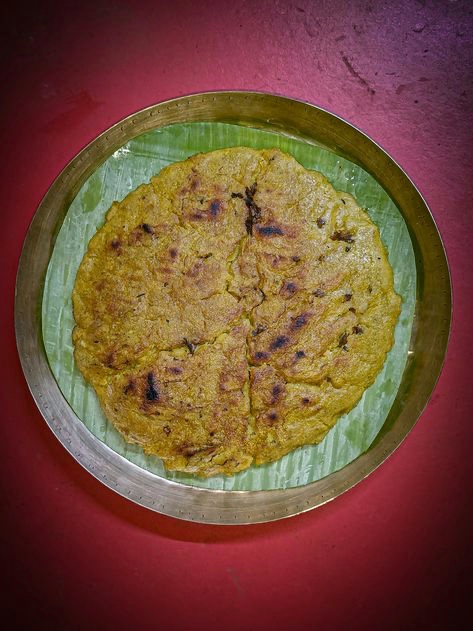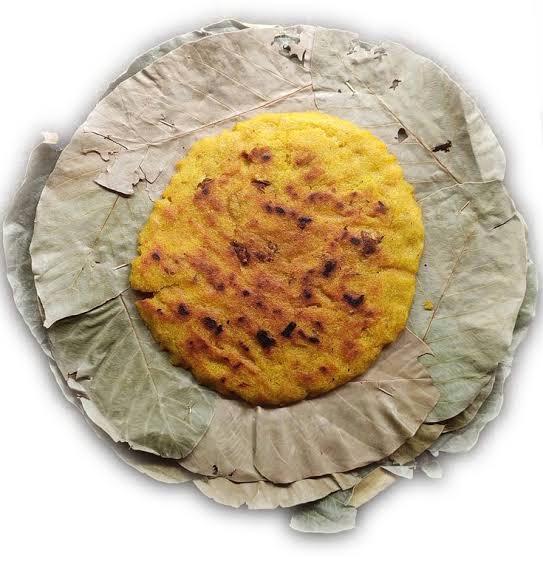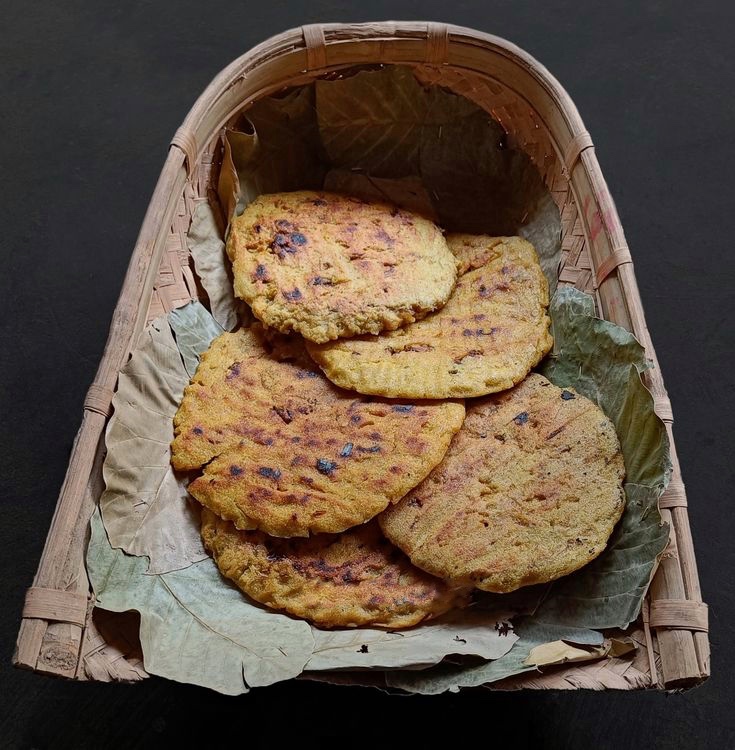Suraj Prakash Murmu, 2nd Semester BCJ
Nestled in the verdant landscapes of Eastern India lies a vibrant community full of indigenous customs and traditions – the Santhal tribe. Renowned for their rich cultural heritage and deep connection to nature, the Santhalis are largely concentrated in the Indian states of Odisha, Bihar, Jharkhand, West Bengal and Assam. They have a treasure trove of unique culinary delights waiting to be discovered, among these delectable offerings stands tall the “Jil Pitha”, a traditional pancake that embodies the essence of Santhali cuisine. Jil Pitha, literally translating to “meat pancake” in the Santhali language, is a one pot meal, it’s basic ingredients being rice flour and different kinds of ground meat mixed with spices wrapped in sal leaves and traditionally baked directly over charcoal in a clay oven. This delectable dish is a testament to the Santhali people’s resourcefulness and utilization of readily available local ingredients using traditional cooking methods to create a satisfying, nutritious and flavorful meal.
Unveiling the Secrets of Jil Pitha
The preparation of Jil Pitha begins with the star ingredient – sal leaves. These heart-shaped leaves, readily found in the Sal forests that dot the Santhal Pargana region, are not just a convenient wrapper; they impart a subtle, earthy aroma and a smoky flavor to the dish. After being carefully cleaned and dried, the sal leaves become the canvas upon which the magic unfolds. The Sal tree is considered sacred by the Santhali people, and its leaves are believed to possess medicinal properties. Furthermore, the act of wrapping the filling in the leaves symbolizes the importance of community and togetherness, with each bite reminding the Santhalis of their deep connection to their land and heritage. “The heart of the Jil Pitha lies in its filling. Traditionally, the pitha is cooked by mixing freshly pounded rice flour paste mixed with finely chopped vegetables like onions, peppers, and coriander leaves. The shredded meat such as chicken, pork, or fish is cooked separately and is added into the rice flour. This mixture is cooked on a pan by adding some water and when it solidifies into a dough,” said Malti Murmu, 65 Kalapathar, Jharkhand. Spices play a crucial role in Santhali cuisine, and Jil Pitha is no exception. A blend of aromatic spices, like turmeric, cumin, coriander, and chili powder, are added to the dough, creating a symphony of flavors that dances on the palate, she added. Once the filling is prepared, the magic truly begins. A dollop of the seasoned dough is placed on one sal leaf, and another leaf is gently pressed on top, forming a pocket. The edges are carefully sealed, creating a leak-proof parcel ready for cooking, explained Murmu. “Traditionally, Jil Pitha is cooked over a bed of hot coals on an open fire. The gentle heat slowly cooks the dough and filling, infusing the pitha with a smoky aroma. Now-a-days , with access to modern amenities, it is cooked over a flat iron griddle or tava on a stove or gas, allowing the sal leaves to char slightly, adding another layer of complexity to the flavor”, said Kabita Tudu, 24, Chakulia, Jharkhand. As the Jil Pitha cooks, the aroma of spices and toasted sal leaves fills the air, a sensory experience that awakens the appetite. When golden brown and cooked through, the Jil Pitha is served piping hot, without any accompaniment. It is sometimes also served with chicken or meat curry.
A Celebration of Culture
Jil Pitha is more than just a delicious dish; it is a cultural touchstone for the Santhali people. This staple food is enjoyed during as a special meal, a comforting snack for farmers working in the fields, and as a celebratory offering during festivals like Sakrat and Diwali. The act of preparing Jil Pitha often becomes a an act of social gathering, with women coming together to share recipes, stories, and laughter as they work their culinary magic together.
Rise of Jil Pitha in the age of social media
Jil Pitha, a traditional Santali dish, is experiencing a resurgence in popularity thanks to the rise of social media. While Jil Pitha has always held a special place in Santali cuisine, a new wave of Santali “Kitchen Influencers” are capturing hearts online. These digital chefs, many boasting views in thousands are showcasing Jil Pitha in all its glory. Through visually-stunning recipe videos and engaging commentary, they’re not only educating a wider audience about this unique dish, but also rekindling a sense of cultural pride within the Santali community. The question is could Jil Pitha be the next culinary trend? With its delicious flavor profile and rich cultural significance, Jil Pitha surely has all the makings of a breakout star.




